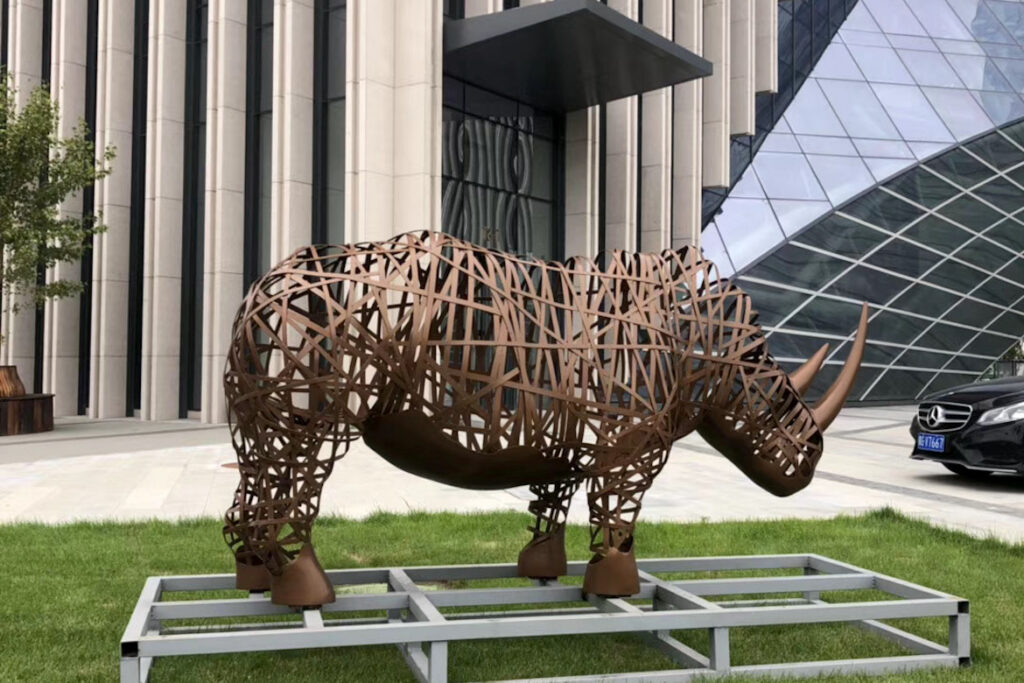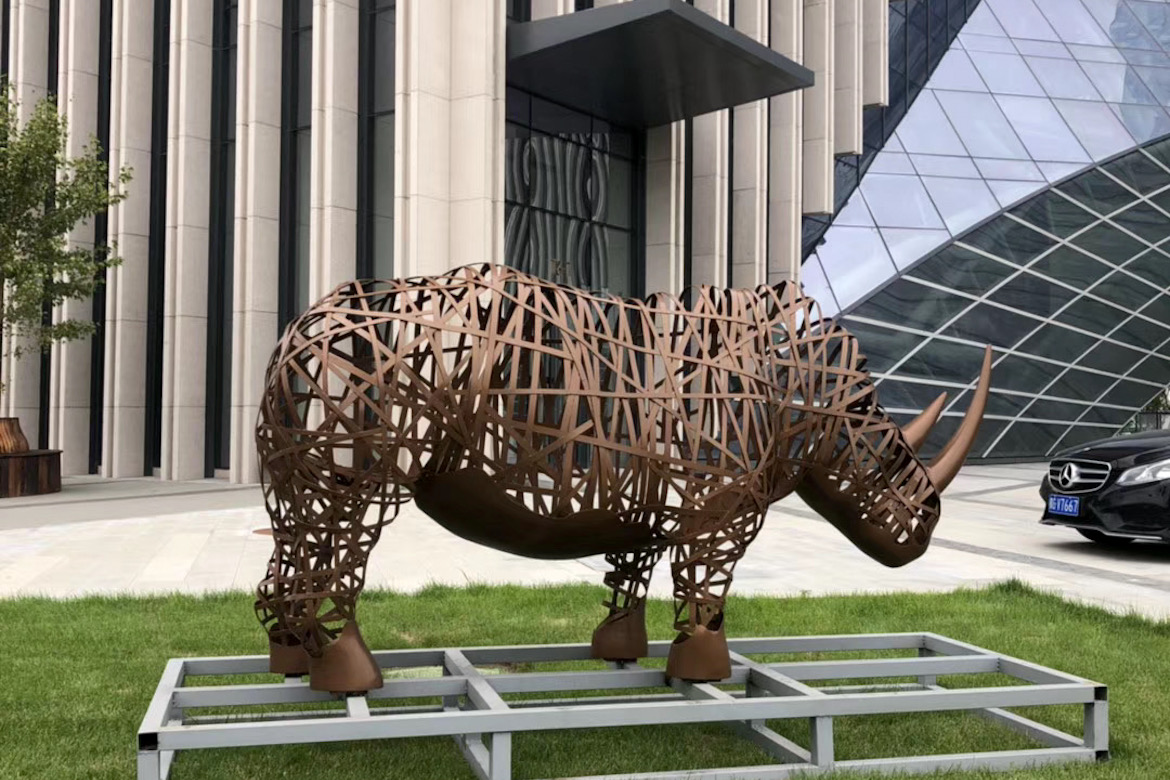
Sculpture art originates from the simple aesthetic concept of human beings in the primitive society. It is closely related to human production and life and is the common creation of all mankind. Later, with the gradual development of human society, the living standards, values and aesthetic concepts of different ethnic groups have been different, resulting in different styles and features of sculpture creation. With the continuous progress of the times, even the sculpture styles of the same ethnic group and country are constantly changing, and even forming new schools. From the perspective of the whole history of sculpture development, the later the era goes, the more the creative style of sculpture will break away from the earliest simple aesthetic concept, and its close connection with human production and life will be replaced by religion, philosophy and the spirit of the times. To understand sculpture, appreciate sculpture and enter the door of sculpture creation, we must have some knowledge of the history of Chinese and foreign sculpture and the masterpieces of different periods.
In sorting out the history of Chinese and foreign sculpture and the masterpieces of various periods, we will guide readers to have a preliminary understanding of the history of sculpture, important works and general sculpture creation process. Among them, the history of Chinese and foreign sculpture and the introduction of works focus on the Chinese part; The introduction of foreign sculpture focuses on European and American sculpture. In fact, the history of Chinese and foreign sculpture is thousands of years, and there are countless works. It is impossible to elaborate the entire history of sculpture and representative works in great detail. Even if you want to elaborate the history of sculpture of a certain country, I’m afraid that this small book can not accommodate it, so you can only choose the key ones to briefly describe. At the same time, for the sake of the fluency of writing and the integrity of layout, the author has to give up a lot of important content.
Chinese and foreign sculptures have the same origin but different development. Foreign sculpture, especially European and American sculpture, was deeply influenced by the ancient Greek and Roman culture. It has long established the artistic concept of taking the image of a person as the main creative subject. Although its history of development is also quite turbulent, and it is also subject to political and religious restrictions, on the whole, it remains unchanged. Its typical people, such as European sculpture creation, succumbed to the influence of the church for a long time in the Middle Ages and became a tool of religious rule, but its creation was still dominated by characters. After the “Renaissance”, European sculpture entered the stage of a hundred flowers in bloom, with numerous schools and theories, which produced many works and theories that had a profound impact on later generations, but there was no lack of a mixture of good and bad. Some so-called schools and theories were like a flash in the pan, and then disappeared in the tide of history after a moment of glory. In modern times, European and American sculpture is influenced by various trends of thought generated by rapid social changes, and various innovative theories come in a stream, which is quite dazzling. However, the root of it is nothing more than the dissatisfaction of artists with reality and their use of artistic techniques to express it. When it comes to creation, they either rearrange the tradition, or subvert the tradition, or do not seek the origin, or use scientific and technological means to innovate. In addition to the traditional human body shaping, his works also have a lot of new contents, which either focus on realism, or abstract freehand brushwork, or exaggerated distortion, greatly expanding the connotation of European and American traditional sculpture creation. However, due to excessive pursuit of personality and entertainment factors, some works are “kidnapped” from the original meaning of sculpture creation.
Different from foreign sculpture, Chinese traditional sculpture, to a large extent, serves religion and politics, and reflects Chinese traditional Confucianism, Taoism and Buddhism behind it. In the pre Qin period, Chinese sculpture was dominated by bronze ritual vessels, followed by ornaments, which were mostly used to carry political, religious, etiquette and other functions. After entering the Qin and Han Dynasties, sculpture creation gradually turned to figure sculpture, especially the tomb decorations of emperors, generals and ministers. For example, the Terracotta Warriors and Horses in the Mausoleum of the First Emperor of Qin and the stone carvings in the tomb of Huo Qubing in the Han Dynasty are among the best. Until the Southern and Northern Dynasties, with the prosperity of Buddhism, religious statues gradually developed into the mainstream of Chinese sculpture creation. Since then, the statues of Moyan Cave in all dynasties have also been the representative works of that time. From then on until the Republic of China, as western art concepts and art education entered China, people of insight began to sort out and standardize traditional sculpture theories with western sculpture theories, and created with western sculpture concepts. Chinese sculpture also appeared a new situation. Since the founding of New China, Chinese culture and art have gradually flourished, and various sculpture creations have sprung up like mushrooms. Since the reform and opening up, with the promotion of China’s urbanization, various outdoor sculptures have been found in every corner of the city, and sculptures on shelves have gradually entered the homes of ordinary people.
The difference between Chinese and foreign sculpture is mainly due to the difference in philosophy and spirit of the times, rather than the number of creative forms or historical materials. However, the latter point is often criticized for Chinese sculpture. Some people even regard the western sculpture theory as the authentic, and further believe that China has only craftsmanship and no sculpture. Admittedly, due to the low status and low cultural level of ancient Chinese craftsmen engaged in sculpture, there is almost no systematic creation theory for traditional Chinese sculpture. However, if we think that there is no sculpture in China, we cannot avoid generalizing too much. Today, when we study sculpture and create sculpture, we should not only learn the western systematic sculpture theory, but also not abandon the rich heritage left by our ancestors. Instead, we should look at and inherit all these from the perspective of development, and learn to create with the attitude of “taking the essence to remove the dross”. Only in this way, can we not fall into the position of paranoia.

